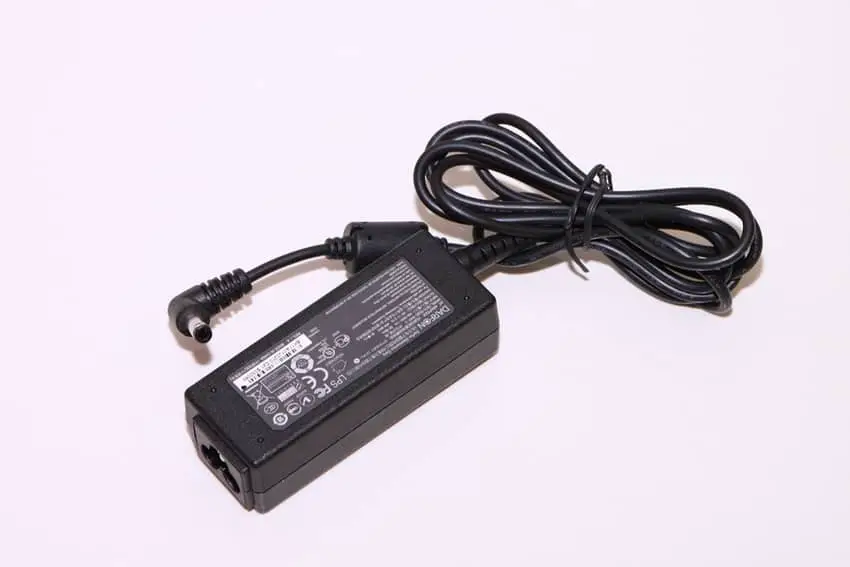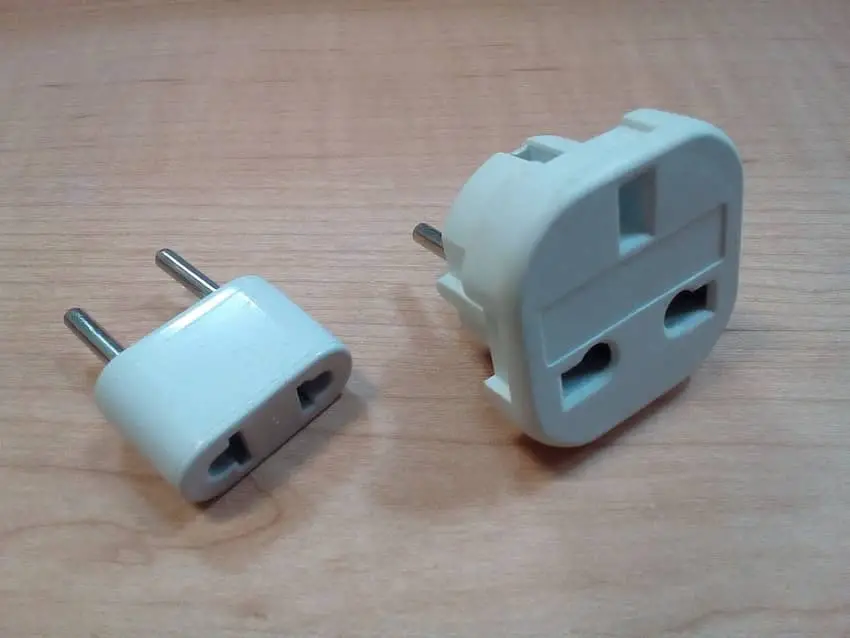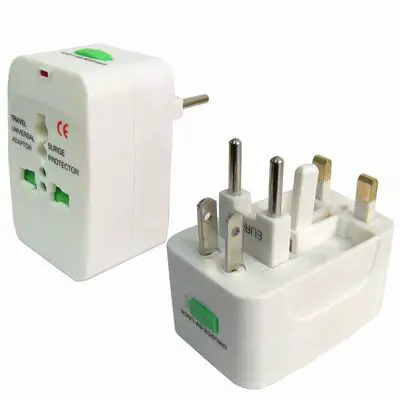Like most European countries, the Netherlands has a high voltage capacity, 230V, with a frequency of 50Hz. If you are used to travelling a lot, you would know that most of the times, you will need both a power converter and a power adapter.
You will need a power converter in the Netherlands, but only if you come from the Caribbean, Japan, Canada or the United States. These countries have a lower voltage, between 100 – 120V, which makes it incompatible for Europe in general. Dual-Voltage devices don’t need a converter, but you must also consider if you need an adapter.

It is very important to know if you will need a power converter or a power adapter, but the only way to find out so it is by knowing what is the voltage and power outlet in your homeland, this is key. If you come to the Netherlands from any other European country, you won’t have to worry about power converters. If you live out of Europe, keep on reading this article for more information and tips!
Who Needs a Power Converter in the Netherlands?
Like the rest of Europe and most countries in the world, the standard voltage is around 230V and the frequency is 50Hz. If you come from a country which uses a standard voltage between 210 – 240V (aka, every country besides North America, Japan and most of the Caribbean territories) you will not need a power converter.
If you want to check the voltage of your gadgets you will most likely be able to find it in the charger itself, if not, and you are sure you purchased them in Europe, don’t worry, it is going to work in the Netherlands and you won’t need, neither a plug adapter, nor a converter.

European countries share the same voltage, which simplifies the manufacture of electronic devices for the companies. This also applies to the use of the so-called Europlug, the plug type C used in most European countries: it doesn’t only standardize the production but also assures a lot of safety measurements applied to these products. If you are also travelling in Europe, you may want to see how converters and adapters work all over the continent and here you have an article all about it.
However, you will need a power converter if you come from one of the countries with a lower voltage capacity are: Venezuela, the US, Taiwan, Sint Maarten, Puerto Rico, Nicaragua, Micronesia, Mexico, Jamaica, Honduras, Haiti, Guam, Costa Rica, Colombia, Cayman Islands, Canada, Cuba, Brazil, British Virgin Islands, Bonaire, Bermuda, Belize, Barbados, Bahamas, Aruba, Anguilla and the American Samoa. If you come from one of these countries and you need a power converter you can get it here on Amazon.
Normally, converters are needed for small electronics such as hair styling electronic devices, but phone chargers and laptop chargers tend to have dual-voltage (110-230V).
Take into account that if you travel to any of these countries from the Netherlands, you will have the same issue, you will also need a converter to be able to plug your electronic devices over there, and most likely you will also need a plug adapter.
Why is it Important to Use a Power Converter?
It is quite important to make sure you know what is the voltage in the country you are going to. Let’s say that, for instance, if your hairdryer or your phone charger needs a higher voltage, but you are in the US or Japan, it will take longer for them to start working like normal. In the opposite case, as it would be if you come to the Netherlands from one of these two countries, and your devices are made for lower power, there is the possibility of them getting damaged by the high V. This is why you need to be ready when travelling abroad.
Electronic devices and gadgets (from your laptop and phone to your hairdryer and electric toothbrush) have special needs. These have been designed with certain batteries and adapted to certain powers for the countries they are being sold on. It is very important to respect this in order to make sure we don’t burn the engine, the batteries or damage them irredeemably.
What is the Difference Between an Adapter and a Converter?
There is a big difference between power adapters and power converters, but we seem to use these words indifferently. First of all, a power adapter is only a plug that adapts the shape of your outlet to that of the country you are travelling to. Here you can get a universal travel adapter. We also have power converters, which are plugs that have the capacity of converting the voltage (V) from one country to another.

The average voltage capacity in Europe is 230 V, which means that if you are travelling from one European country to the Netherlands, you will never need a converter. Only if you come from the UK, Ireland, Malta or Gibraltar, you will need an adapter. However, if you are coming from abroad, for instance, the United States, Colombia or Japan, you will not only need a power adapter but also a converter.
The most common plug type in Europe is the Europlug, a type C plug created to unify the production in Europe, and only in the countries mentioned before, UK, Ireland, Malta and Gibraltar, they use a different type of plug.
If you come from, for instance, the United States, it will be smart for you to get a converter that also works as an adapter, which most do anyway. You will need this not to overpower your laptop while charging it in the Netherlands with twice as much voltage as the US.
It is important to know that for electronic devices and it is also very important to only use converters for a short period of time. If we are planning on staying for a long period of time or even moving to the Netherlands, it would be smart to get all the devices that we need from this country. Of course, I am not saying get another laptop, but maybe it would be smart to invest in a new battery cable for your laptop.
In any case, nowadays most gadgets are “dual-voltage”, which means they have been created to be used both in Europe and North America, mostly. However, it is very important to check that the item itself says so and that we don’t damage it.
Can I Travel to the Netherlands without an Adapter or Converter?
My recommendation would be to make sure what type of plug you use in your country, and if you also happen to need a converter. There are great websites where you can check all the important technical information you need to know, and what you need depending on where you come from. Here you have some help:
| Country of Origin | Adapter | Converter |
| Canada | yes | yes (except dual-voltage devices) |
| USA | yes | yes (except dual-voltage devices) |
| Japan | yes | yes (except dual-voltage devices) |
| Chile | no | no |
| European country (except the UK and Ireland) | yes | no |
| Most of the Caribbean | yes | yes (except dual-voltage devices) |
If you are already in the Netherlands but you forgot to bring either an adapter or a converter, you can check out this article with the best places to buy an adapter close to you when in Amsterdam and don’t worry, there are many things you can do:
- If you are staying at a hotel, ask at the hotel desk! Most hotels in Amsterdam are prepared to help tourists and may have some adapters or convertors to lend their guests. You are not going to be the first guest who forgot to bring one!
- There are many shops where you can buy them: HEMA (very popular Dutch shop where you will find a little bit of everything you may or may not need), Praxis (construction store and DIY place to go) and most touristic shops will also have a solution for you.
- Airports. If you are still at the airport, you will be able to find both adapters and converters. Schiphol airport, in Amsterdam, has a lot of shops inside the lounge and on arrivals, and you will be able to find converters there, no doubt about that.
Get a Multi Plug
If you are one of those super organised persons who is planning his or her trip ahead of time, there are a lot of good deals online to get yourself a Universal Travel Adapter Multi Plug Charger.
This is a little bit of an investment, but this plug has a lot of uses and it will not only work perfectly well for your trip to the Netherlands but also the rest of the world, for future trips.

My tip would be to double-check that includes a converter, as you may have seen after reading this article, it is very important to double-check that part, but besides that, it has a lot of advantages:
- USB entrance: most of these new gadgets come with more than one USB entrance, which makes charging all the electronic devices you take on your trip, way easier and lastly.
- Indicates the continent and country: these items come with instructions, so in case you are hesitant to know if you will be able to use it in certain continent or country, or if you are unsure, you will have some guidance.
- Lock and unlock: you can save energy when your devices are charged by locking or unlocking them without having to unplug them.
- Share them: you won’t have to get more than one if you are travelling with friends or your partner. Since it has several entrances one will do!